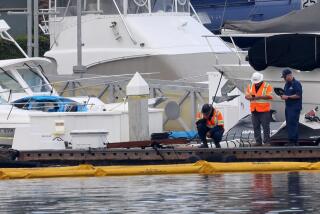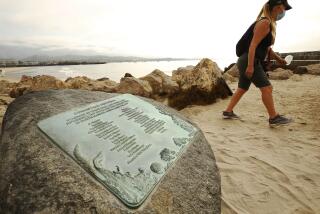Sailor to face court-martial on arson charges in fire that destroyed Navy ship in San Diego
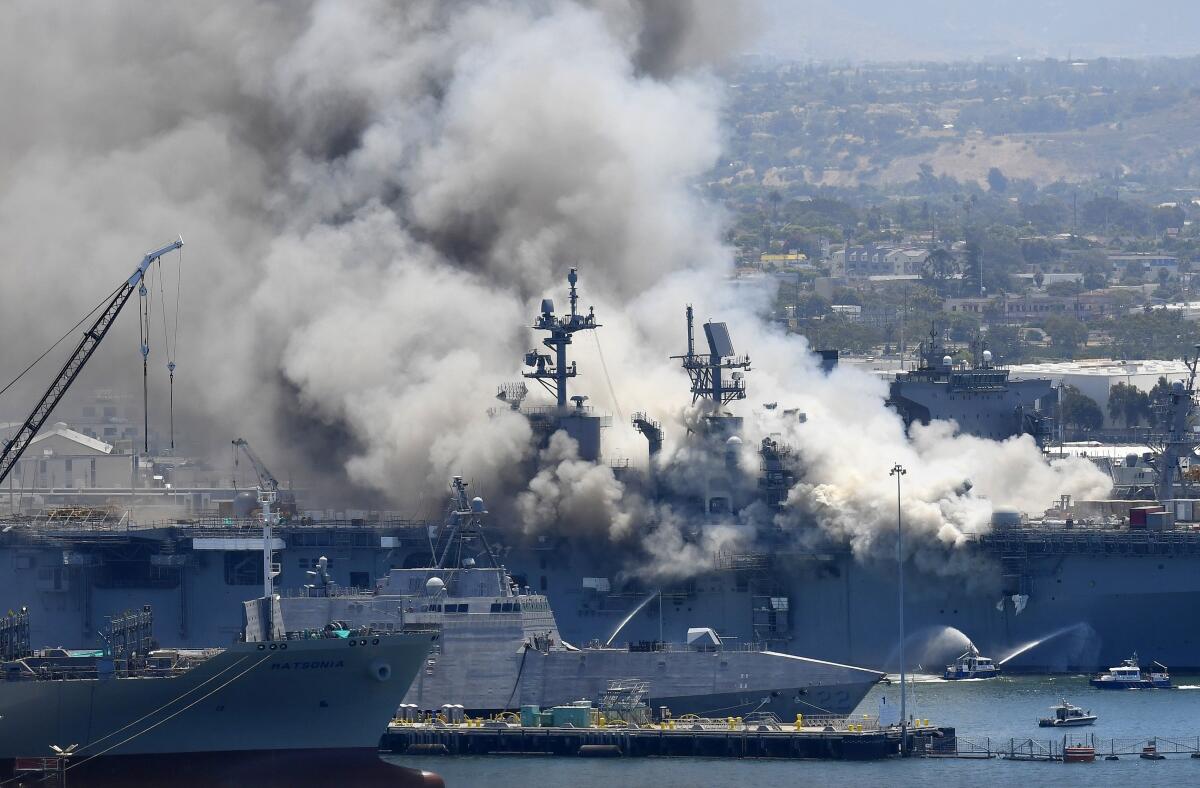
SAN DIEGO — A 20-year-old sailor will face a military trial on charges he deliberately set the fire that destroyed a $1.2-billion warship on the San Diego waterfront in 2020, the Navy announced Friday.
Seaman Recruit Ryan Sawyer Mays, a former deck seaman on the amphibious assault ship Bonhomme Richard, is charged with aggravated arson and the willful hazarding of a vessel in connection with the four-day fire that destroyed most of the ship. Vice Adm. Steve Koehler, the commander of the San Diego-based U.S. 3rd Fleet, issued the order Wednesday to send the case to trial, according to court documents.
Mays was notified Friday, said Gary Barthel, Mays’ San Diego-based civilian lawyer. The sailor denies the charges against him, Barthel told the San Diego Union-Tribune.
“He maintains his innocence — always has,” Barthel said. “He’s not happy to be going to court-martial, but he’s determined to prove his innocence.”
The notification came as a surprise to Mays, Barthel said, because a military judge recommended against proceeding to trial.
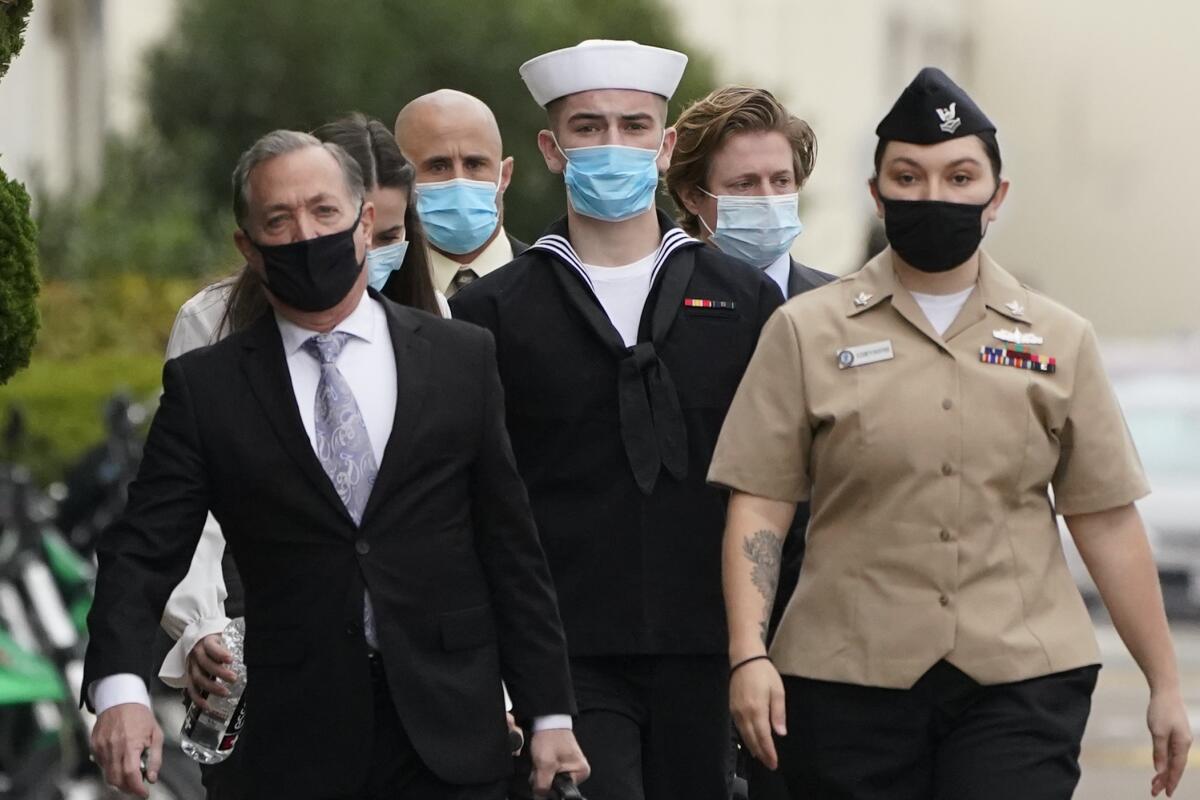
At a preliminary Article 32 hearing at Naval Base San Diego in December, Navy prosecutors made their case against Mays in front of Capt. Angela Tang, a Navy judge acting as the hearing officer. During the three-day hearing, witnesses for both sides testified about the fire and about comments Mays allegedly made in the days and weeks afterward.
In the military justice system, Article 32 hearings fill the role that a grand jury does in the civilian system, but only one person — in this case, Tang — weighs the evidence and testimony and recommends whether there is probable cause to proceed to trial, or court-martial.
According to Barthel, Tang’s report recommended against going to trial over concerns about the evidence after she had considered the case and questioned witnesses.
In the military system, legal matters fall under a single “convening authority” who makes the final decisions on whether to send a case to trial and whether a guilty verdict is upheld. In this case, that authority is the 3rd Fleet admiral, Koehler.
Cmdr. Sean Robertson, Koehler’s spokesperson, declined to comment on Tang’s recommendation and on Barthel’s assertion that she was concerned about the strength of the evidence, citing the integrity of the legal process. Both the Navy and Barthel also declined to provide the Union-Tribune with a copy of Tang’s report. Robertson said only that the admiral’s decision came after “thoroughly reviewing the entirety of the hearing officer’s report.”
Barthel also pointed out that Mays’ rank as provided by the Navy in his biographical data sheet — seaman recruit, or E-1 — differed with the one on his charge sheet, which still reflected seaman apprentice, or E-2. Mays’ rank was the subject of confusion during his December hearing as the Navy said he was an E-2, but he appeared in court with the rank insignia of a seaman, or E-3.
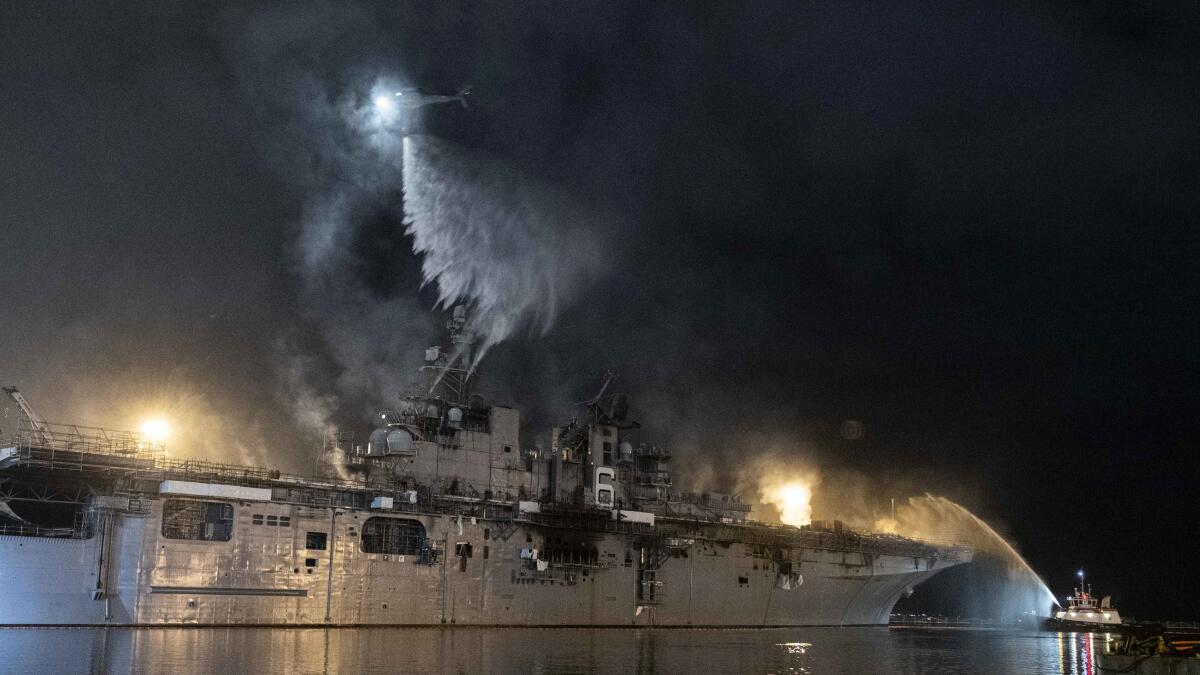
Prosecutors told Tang at the time that showing up to his own hearing in the wrong uniform was an example of Mays’ attitude toward the Navy. They also said Mays had recently tested positive for drugs, although they were not charging him with the offense.
According to his Navy biography, Mays was reduced to his current rank Jan. 11. Barthel declined to comment on whether Mays was reduced in rank as a result of non-judicial punishment, an administrative measure military commanders may take outside the military court system.
Sailors first reported seeing smoke on the Bonhomme Richard — whose primary mission was to transport Marines and deliver them to a beachhead in amphibious vehicles and aircraft — just after 8 a.m. July 12, 2020, near the ramp down to its lower vehicle storage area, or “lower V.” The ship was nearing the end of an almost two-year, $250-million upgrade to accommodate Marine Corps F-35B fighters.
A Navy investigation found the ship and its crew ill-prepared to battle the blaze, with sailors slow to respond and shipboard fire stations missing equipment or out of commission.
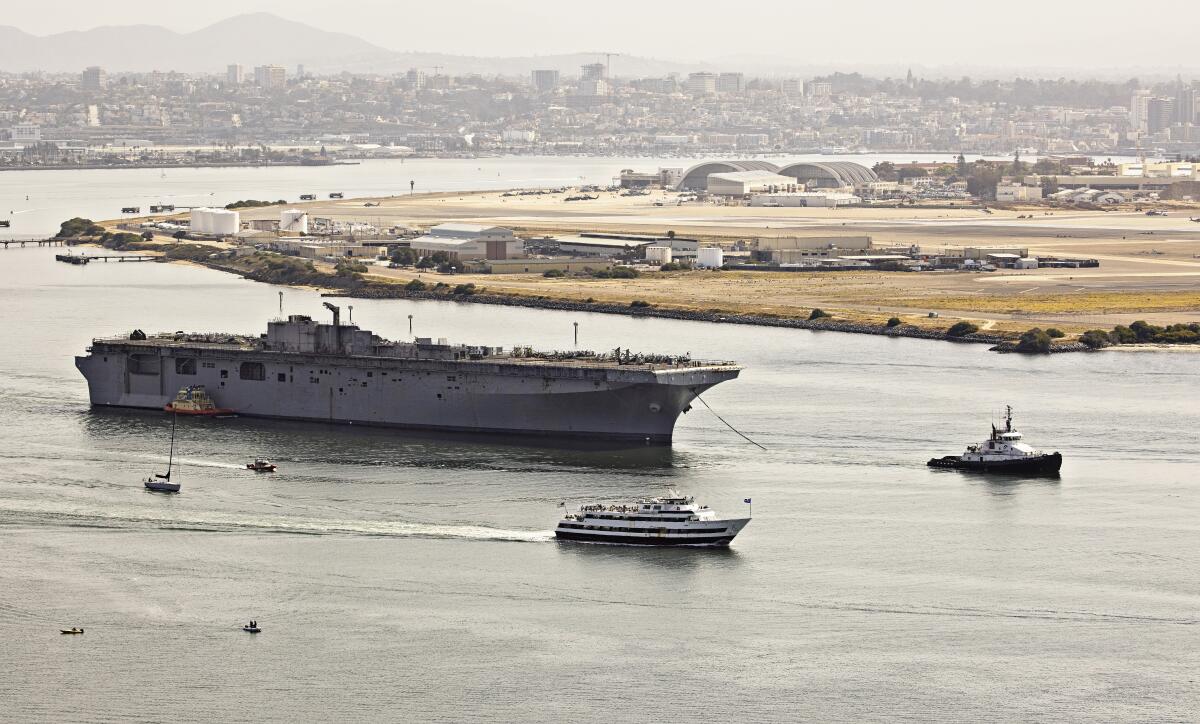
Two hours passed before firefighters from the San Diego Fire-Rescue Department first put water on the flames. By then, it was too late, and the ship burned more than four days before the fire was extinguished. Everything from the waterline up was destroyed. In December 2020, citing potential repair costs, the Navy announced the 22-year-old ship would be scrapped.
It was decommissioned and towed out of San Diego in April.
At Mays’ Article 32 hearing, an arson investigator from the Bureau of Alcohol, Tobacco, Firearms and Explosives said the fire was deliberately set in the ship’s lower V. A sailor on watch at the top of the ramp into the lower V testified he saw Mays — and only Mays — walking down the ramp carrying a bucket just before the fire started.
Prosecutors allege Mays was disgruntled working as a deck seaman on the ship. He joined the Navy in May 2019 to become a SEAL but quit the notoriously demanding Basic Underwater Demolition/SEAL course soon after he started it in September of that year. He reported on board the Bonhomme Richard in March 2020 to the vessel’s deck department.
The sailor on watch the morning of the fire testified hearing Mays say “I love deck” as he passed.
Dozens of Navy officers along with Navy civilian employees were named in the Navy’s investigation into the blaze as contributing to the conditions that left the ship vulnerable to fire.
No actions have been announced by the Navy in regard to those cases.
More to Read
Sign up for Essential California
The most important California stories and recommendations in your inbox every morning.
You may occasionally receive promotional content from the Los Angeles Times.
